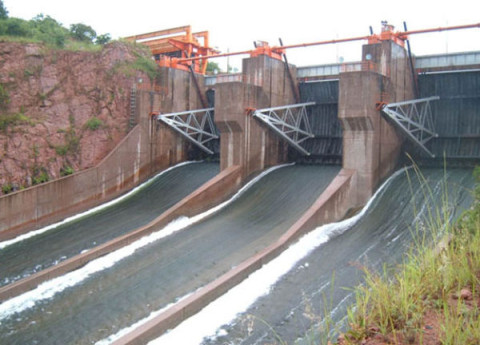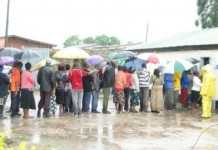As we turn fifty, we continue to ask some very important questions to check our progress and make a prognosis into the next half a century. Some pertinent questions are:
Will some parts of Zambia remain without power for the next 50 years still?
The answer to this question is an obvious yes. It has taken us 50 years to afford only a about quarter of our population access to electricity. It will take another fifty years to raise that to half of the population if we continue at the current rate of economic development, population growth and rate of implementation of electrification strategies.
Liu, et al (2013) posits that only 26% of the Zambian population have access to electricity while the proportion is rather diminutive in rural areas at 3.1% only. Other sources posit the national figure at 19% (Erickson, Tiselius, 2013), 22% (Zambia Rural electrification Master Plan Phase 1 and 20.3% (CDM-SSC-PDD, Version 03). All sources are consistent in pointing out that only about a quarter of the 50 year old nation, endowed with some 40% of water resources in the region(Energy Sector Profile, Zambia Development Agency) plus other sources of energy have access to this essential commodity.
What is the main caretaker, the chief custodian of the Zambian citizens’ welfare; the Government, doing about this energy issue?
In 2003, the Parliament of the Republic of Zambia enacted the establishment of the Rural Electrification Authority with a mandate that among other things includes overseeing of projects aimed at improving the provision and access to electricity in rural Zambia. The REA was also mandated to oversee the Rural Electrification Fund REF) (ibid).
It is commendable to note that the government of Zambia equates access to electricity to basic needs such as shelter and water (Power Instability in Rural Zambia, Macha).
Since its inception in 1970, has ZESCO done enough to light up the country? Can the parastals boast of having lived up to its expectations when three quarters of its potential clients have no access to this very important service?
Suffice to note that ZESCO is not the only player in this matter. We have the CEC who buy power from ZESCO for supplying the mines on the Copperbelt. We also have the Energy Regulation Board (ERB) and of course line ministries of government plus other stakeholders.
Are all these players doing enough? The only time that these entities should be credited with penultimate accomplishment is when we attain 100% electrification of Zambia. While the targeted electrification of 50% of rural areas (rising from 3.1%) and 90% for urban areas (rising from 48%) by 2030 which translates to 60% country average (Zambia, Ministry of land, Energy and Water Development (2010), Power Systems development Master Plan), it is only hundred per cent equitable access to electricity for all (rural and urban alike) that deserves showering the main players with praises.
Arguably, electricity generation, transmission and distribution has faced similar challenges to those faced by the telephone services which enjoyed a breakthrough following the liberation of the sector. The over 78% mobile penetration rate which we now have came about when the private sector got involved in our telephony industry – which saw the coming of CelTel and Telecel and of course Zamtel. That revolution dwarfed the landline phone penetration rate in a highly remarkable fashion. It could be inferred that the improved involvement of the private sector in the supply of electricity could help to stir up the drive to light up the whole country.
In any case, Zambia is said to have a capacity to produce some 6000MW of hydro power. Currently, we produce only 1858.5MW which is less than one third of the full potential. This represents a huge gap which the private sector can exploit to supply the local and regional markets – especially in view of the fact that the electricity transmission system of Zambia is connected to Tanzania, Botswana, Namibia, the DRC and Zimbabwe (Zambia Rural Electrification Master Plan Phase1). So both the private and public sectors stand to leverage these synergies to not only fulfil local demand, but also augment revenues both in the short and long terms. It is common knowledge that energy demands in the region are high and continue to rise but the production does not much the demand. The national electricity demand continues to rise at the rate of 3% per annum (Liu et al, 2013).
It is noteworthy that the Sixth National Development Plan 2011-2016 has articulated strategies to increase the prevalence of renewable energy. These strategies include:
i. To promote the development of solar technology
ii. To promote the generation of electricity from geothermal energy and
iii. To promote the use of biogas for cooking, lighting and electricity generation.
This further demonstrates government’s commitment to this matter but it remains to be seen how this is implemented. The sooner the better. 50 years of living in the dark is too long.
By the way, has the production capacity at the Kafue Gorge, Kariba North Bank, Victoria Falls, been exploited to the limit? If not, start from there.
The incentives to lure investment in the energy sector are quite attractive. These need further publicity in order to lure potential investors (ref to Zambia Energy Sector Profile – February 2011).
But why is electricity so important?
Electricity is an engine for:
i. Improved quality of life through
- Improved agro products and tourism
- Provision of basic amenities such as good quality power supply itself, television, radio, mobile network and the internet.
- Improvement of health and education by attracting professionals such as paramedics and educators.
ii. Attracting investment in various industries which in turn helps to reduce poverty through creation of employment and also helps with the development of new infrastructure.
In conclusion, Zambia has the capacity to exploit its electricity generation potential to light up every corner of the country and to have surplus for export. Suffice to recognise that a number of initiatives earmarked to address the electricity deficit; the scale and pace of these interventions need to be amplified.
By Elarm Chalusa

 JOIN DRIVERN TAXI AS PARTNER DRIVER TODAY!
JOIN DRIVERN TAXI AS PARTNER DRIVER TODAY!











